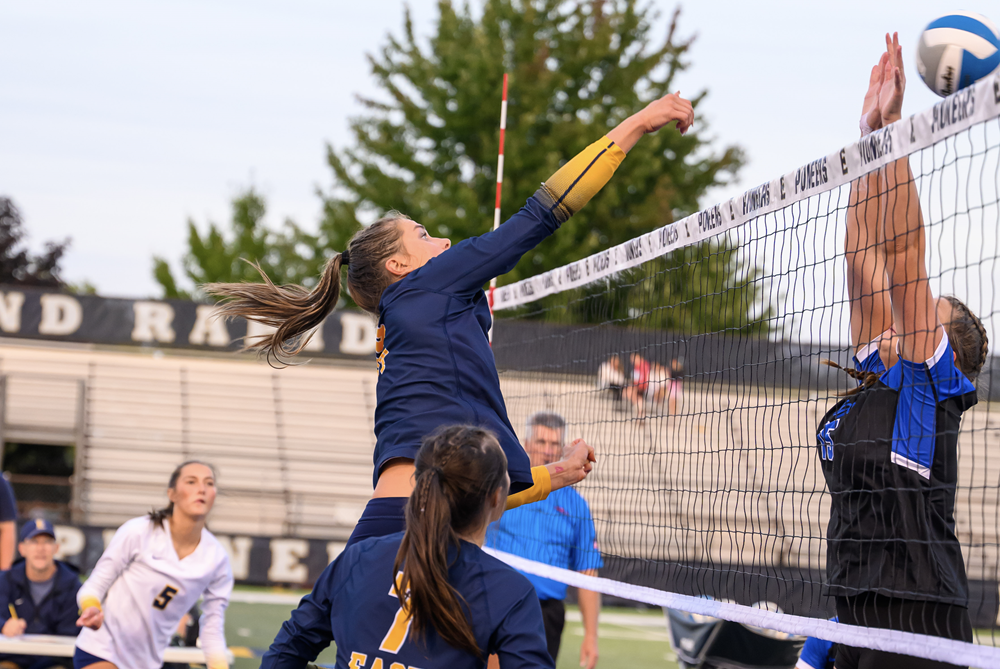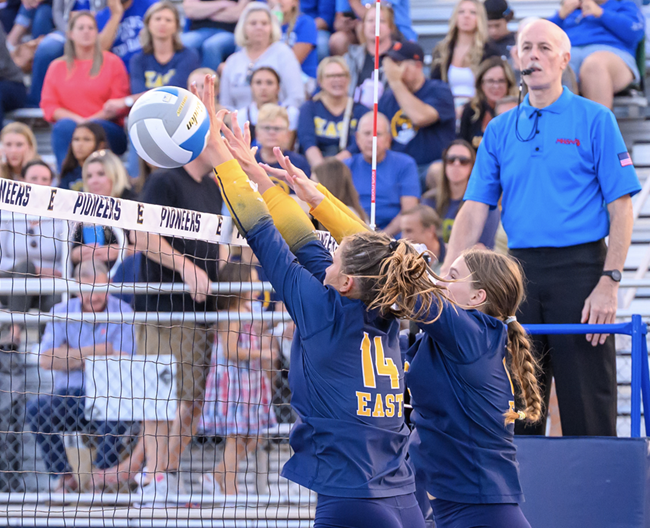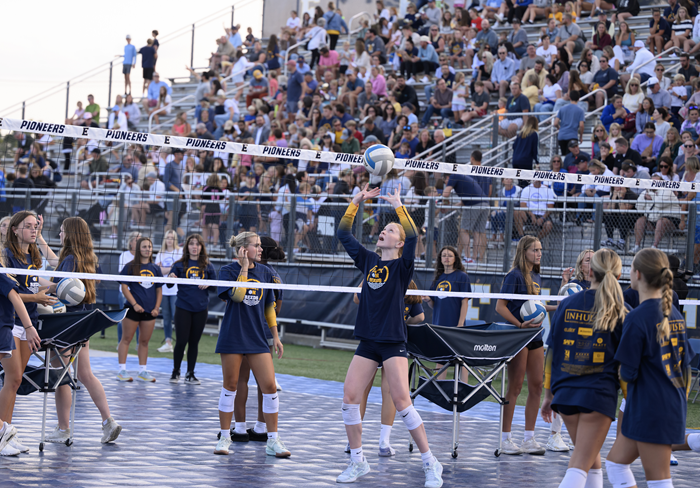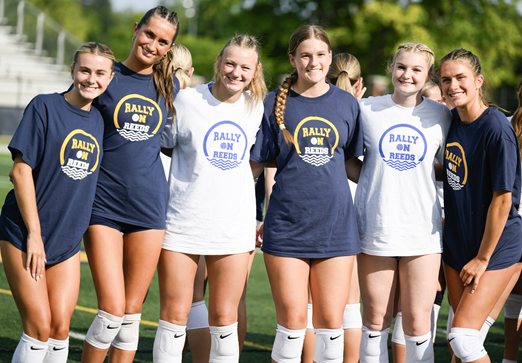
New Math: Division & Multiplication Problems
July 25, 2017
By Jack Roberts
MHSAA Executive Director
This is the second part in a series on MHSAA tournament classification, past and present, that will be published over the next two weeks. This series originally ran in this spring's edition of MHSAA benchmarks.
High school tournament classifications went viral before there was social media and most of us knew what “viral” meant.
Much as a virus infects computers today or has created epidemics of disease around the world for centuries, high school tournament classification – once introduced – tends to spread uncontrollably. Once started, it tends to keep expanding and rarely contracts.
While we are still some distance from providing every team a trophy as a result of expanding high school tournament classification across the country, there is criticism nevertheless that we are headed in that direction – a philosophy which is supposed to exist only in local youth sports for our youngest children.
Michigan could be blamed for all this. Michigan is generally accepted as the first state to provide different classifications for season-ending tournaments for different sized schools. It started a century ago. Today, every state has various classifications for its tournaments in most if not all sports. And it is a bit ironic that Michigan – creator of the classification chaos – more than most other states has kept the number of tournament classes or divisions under control.
Yes, there is evidence that tournament classifications have expanded over the years in Michigan, especially with the relatively recent introduction of tournaments in football and the late 1990s’ move from classes to divisions in most MHSAA tournaments. But the MHSAA Representative Council has held true to its word when it expanded the playoffs for football from four classes to eight divisions: this is needed because of unique factors of football, factors that exist in no other sport; and all other sports should be capped at a maximum of four classes or divisions.
Kentucky is the preeminent defender of single-class basketball. All of its 276 high schools compete for the single state championship for each gender. In Indiana, there are still open wounds from its move in 1998 from one to four classes for its 400 schools in basketball.
Multi-class tournaments have tended to increase the number of non-public school champions, which some states are trying to lower through enrollment “multipliers,” and also tend to increase the number of repeat champions, which some states are trying to affect with “success factors” which lift smaller schools into classifications for larger schools if they take home too many trophies.
While there is considerable evidence that state tournaments do as much bad as good for educational athletics, state associations persist in providing postseason tournaments because, on balance, the experiences are supposed to be good for student-athletes. And once we reach that conclusion it is just a small leap to believe that if the tournaments are good for a few, they must be better for more – which leads to creating more and more tournament classifications. One becomes two classes, then three, then four and so forth.
While the argument is that more classifications or divisions provides more students with opportunities to compete and win, it is undeniable that the experience changes as the number of tournament classifications expands. It is not possible for state associations to provide the same level of support when tournament classifications expand to multiple venues playing simultaneously. For example, there is less audio and video broadcast potential at each venue, and less media coverage to each venue. Focus is diluted and fans diminished at each championship.
No one can argue reasonably that today's two-day MHSAA Football Finals of eight championship games has the same pizazz as the one-day, four-games event conducted prior to 1990.
In some states the number of divisions has grown so much that it is difficult to see much difference between the many season-ending state championship games and a regular-season event in the same sport.
It is a balancing act. And Michigan has been studying that balance longer than any other state, and charting a steadier course than most.
Addition by Division
The shift to Divisions for MHSAA Tournament play in numerous sports has added up to a greater number of champions for teams and individuals across the state. Following are the sports currently employing a divisional format, and the procedures for determining enrollment and classification.
In 23 statewide or Lower Peninsula tournaments, schools which sponsor the sport are currently divided into nearly equal divisions. They are:
- Baseball - 4 Divisions
- Boys Bowling - 4 Divisions
- Girls Bowling - 4 Divisions
- Girls Competitive Cheer - 4 Divisions
- LP Boys Cross Country - 4 Divisions
- LP Girls Cross Country - 4 Divisions
- LP Boys Golf - 4 Divisions
- LP Girls Golf - 4 Divisions
- Ice Hockey - 3 Divisions
- Boys Lacrosse - 2 Divisions
- Girls Lacrosse - 2 Divisions
- Boys Skiing - 2 Divisions
- Girls Skiing - 2 Divisions
- LP Boys Soccer - 4 Divisions LP
- Girls Soccer - 4 Divisions
- Girls Softball - 4 Divisions
- LP Boys Swimming & Diving - 3 Divisions
- LP Girls Swimming & Diving - 3 Divisions
- LP Boys Tennis - 4 Divisions
- LP Girls Tennis - 4 Divisions
- LP Boys Track & Field - 4 Divisions
- LP Girls Track & Field - 4 Divisions
- Wrestling - 4 Divisions
Lists of schools for each division of these 23 tournaments are posted on MHSAA.com approximately April 1. Listings of schools in Upper Peninsula tournaments for their sports are also posted on MHSAA.com. The lists are based on school memberships and sports sponsorships in effect or anticipated for the following school year, as known to the MHSAA office as of a date in early March.
In football, the 256 schools which qualify for MHSAA 11-player playoffs are placed in eight equal divisions annually on Selection Sunday. Beginning in 2017, the 8-player divisions will be determined in a like manner on Selection Sunday as well, with 32 qualifying schools placed in two divisions.
Schools have the option to play in any higher division in one or more sports for a minimum of two years.
The deadlines for "opt-ups" are as follows:
- Applications for fall sports must be submitted by April 15
- Applications for winter sports must be submitted by Aug. 15
- Applications for spring sports must be submitted by Oct. 15
Subsequent to the date of these postings for these tournaments, no school will have its division raised or lowered by schools opening or closing, schools adding or dropping sports, schools exercising the option to play in a higher division, or approval or dissolution of cooperative programs.
When the same sport is conducted for boys and girls in the same season (e.g., track & field and cross country), the gender that has the most sponsoring schools controls the division breaks for both genders.

EGR, Hopkins Take Volleyball Match to Football Field for 'Rally on Reeds'
By
Dean Holzwarth
Special for MHSAA.com
August 28, 2024
EAST GRAND RAPIDS – Memorial Field in late August is typically filled with the sounds of football pads smashing against each other and raucous crowds celebrating touchdowns.
 Last week, however, a different environment engulfed East Grand Rapids’ football field.
Last week, however, a different environment engulfed East Grand Rapids’ football field.
With picturesque Reeds Lake as the backdrop, an outdoor volleyball match between the Pioneers and visiting Hopkins was played on the 50-yard line.
The first-year event was dubbed “Rally on Reeds,” and it turned out to be a special gathering of the East Grand Rapids community.
“It was electric,” first-year Pioneers coach Bruce Hungerford said. “Like a ruckus football game meets a minor league baseball-type environment. It was very cool."
More than 2,000 people attended the match, which ended with EGR sweeping the Vikings 3-0.
It was a spectacle that included a carnival area, a visit from members of the Grand Rapids Rise professional volleyball team, a band and the opportunity to showcase the sport of high school volleyball in a non-traditional setting.
 “It was unreal,” EGR junior captain Sadie Devlaeminck said. “It was just so great to see how much the community showed up for the volleyball team and to see the environment that we played in. It was just crazy.”
“It was unreal,” EGR junior captain Sadie Devlaeminck said. “It was just so great to see how much the community showed up for the volleyball team and to see the environment that we played in. It was just crazy.”
Hungerford had an idea for an event like this before being hired for the job. He was eager to implement it.
“I had it in my plan to build a community, and host a lot of home games,” Hungerford said. “EGR has an awesome football setup because there’s no track around the football field and it just sits perfectly.
“I had the idea well before the Nebraska (volleyball) game (last season) and mostly because of Grand Haven. They do the Battle of the Boardwalk, so I knew people did it outside for scrimmages and games. With this being my first game coaching, I thought this would be a cool way to try and get these little kids that I’ve coached to come and see it, and it went from there.”
Nearby Aquinas College rented EGR the court, and the nets and stanchions were supplied by Grand Rapids Community College.
While excitement built, the process of putting together the court on the football field proved to be a challenging and time-consuming task.
 It took more than seven hours for the court to be constructed with the finishing touches completed at 6:48 p.m., 12 minutes before the start of the match.
It took more than seven hours for the court to be constructed with the finishing touches completed at 6:48 p.m., 12 minutes before the start of the match.
“The turf provided a tougher environment because of the squares, and you can’t just slide them in,” Hungerford said. “We had to restart a few times and I thought we were absolutely dead in the water at one point. But we got the lines down, and it wasn’t going anywhere.”
While anxiety surrounded the installation of the court, that was eased when play started.
“I was a little nervous because the court took so long to set up,” Devlaeminck said. “And I thought it was going to be harder than indoors because of all the different elements like the wind. But I knew it was going to be a lot of fun playing with my team in a football stadium.
“It was nice for the football team to come and sit in the student section and show support and cheer us on. I thought it was great.”
Hungerford said the Hopkins’ players and coaches enjoyed it as well.
“I didn’t want them to think that they were coming to our prom,” he said. “We were in constant contact with them, and their principal participated in the dunk tank. We got one of their kids to be interviewed by the media, and it was a fun community connection. They all loved it, and they said it was super cool. They were glad they came.”
 Sophomore Kenzee Stanley-Eldred was overwhelmed by the amount of support the Pioneers received.
Sophomore Kenzee Stanley-Eldred was overwhelmed by the amount of support the Pioneers received.
“We weren’t used to playing in front of very big crowds and don't usually have much of a student section, but a lot of people from our school came for this,” Stanley-Eldred said. “And also just the environment of playing outside on a sport court instead of being in a gym. Being outside feels a lot different.”
Organizers hope to make it an annual event by having different teams each year play against EGR.
For many in attendance, this was their first glimpse of high school volleyball.
“A lot of people that I knew and I talked to after the game said it was the first time ever having anything to do with the sport, so it was really cool that we let them into that,” Stanley-Eldred said. “I think it had a big impact with just how many people showed up and were willing to support one another, especially when it was doing something so new and different.”
 Dean Holzwarth has covered primarily high school sports for Grand Rapids-based WOOD-TV for five years after serving at the Grand Rapids Press and MLive for 16 years along with shorter stints at the Ionia Sentinel and WZZM. Contact him at [email protected] with story ideas for Allegan, Kent and Ottawa counties.
Dean Holzwarth has covered primarily high school sports for Grand Rapids-based WOOD-TV for five years after serving at the Grand Rapids Press and MLive for 16 years along with shorter stints at the Ionia Sentinel and WZZM. Contact him at [email protected] with story ideas for Allegan, Kent and Ottawa counties.
PHOTOS (Top) An East Grand Rapids hitter puts the ball past a Hopkins block during last week’s “Rally on Reeds” game one EGR’s football field. (2) A pair of Pioneers work to get their hands on a kill attempt. (3) East Grand Rapids warms up as fans fill the stands. (4) East Grand Rapids and Hopkins players take a photo together wearing their “Rally on Reeds” shirts. (Photos by Kathy Hoffman/Michigan Sports Photo.)

